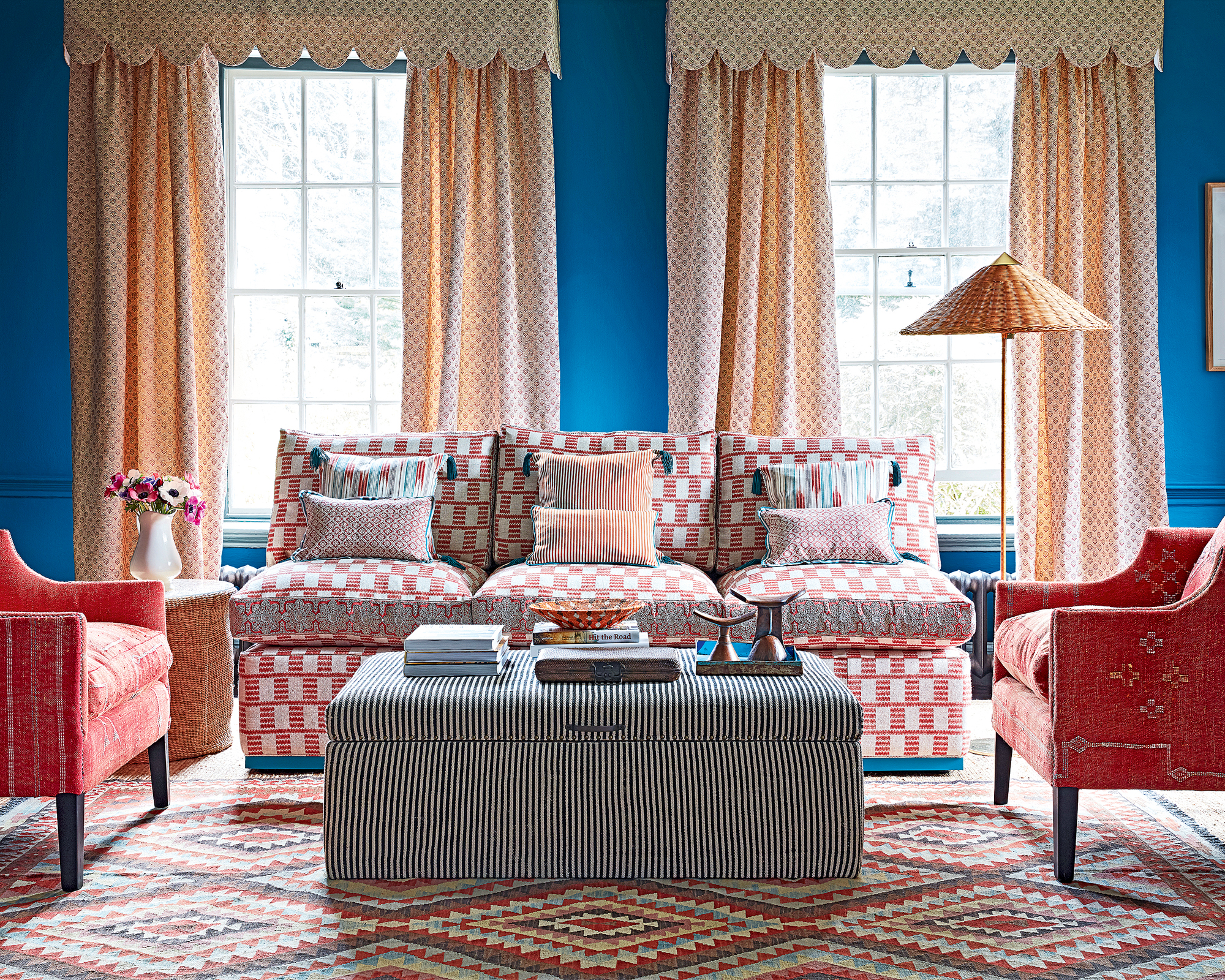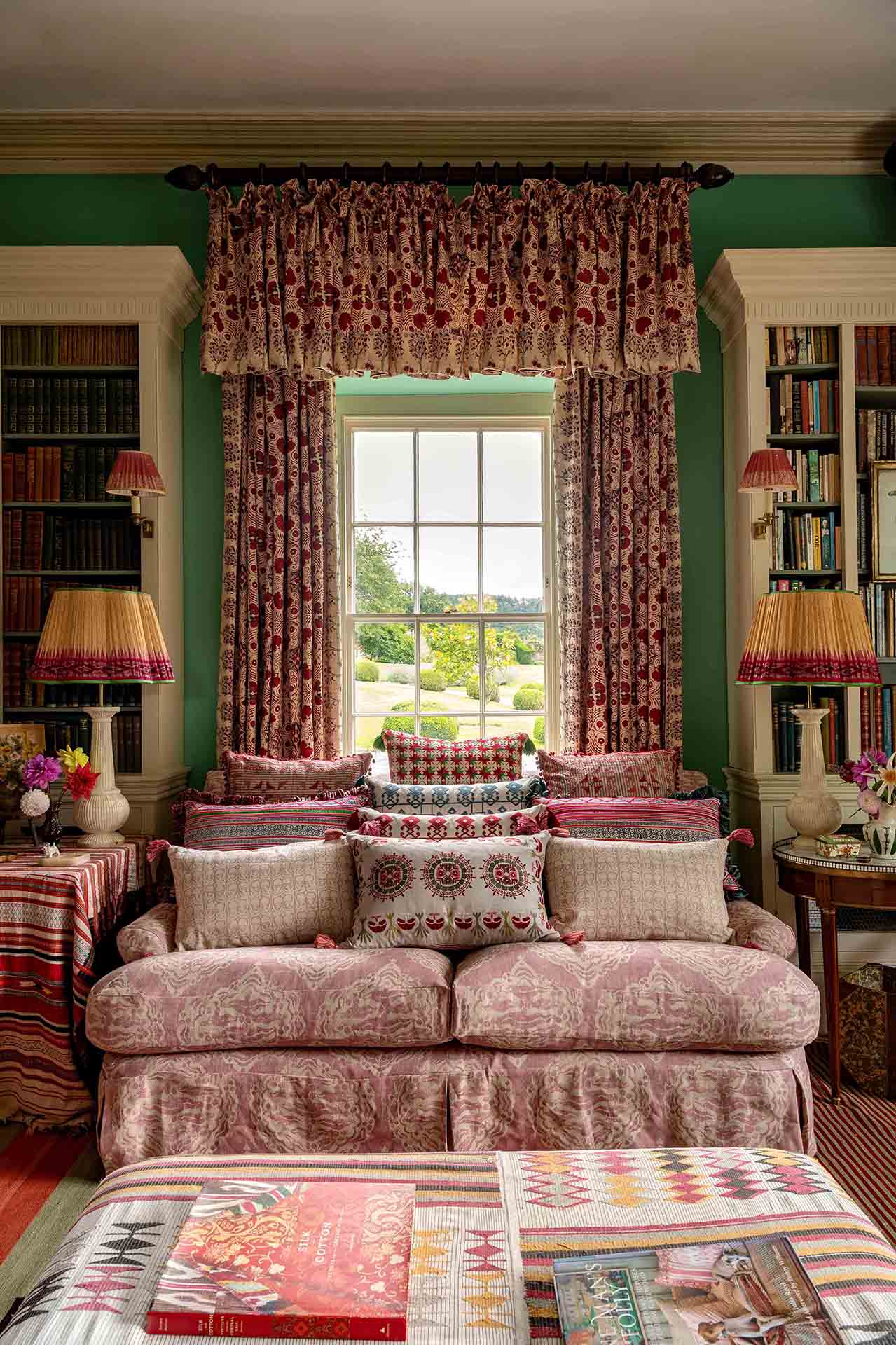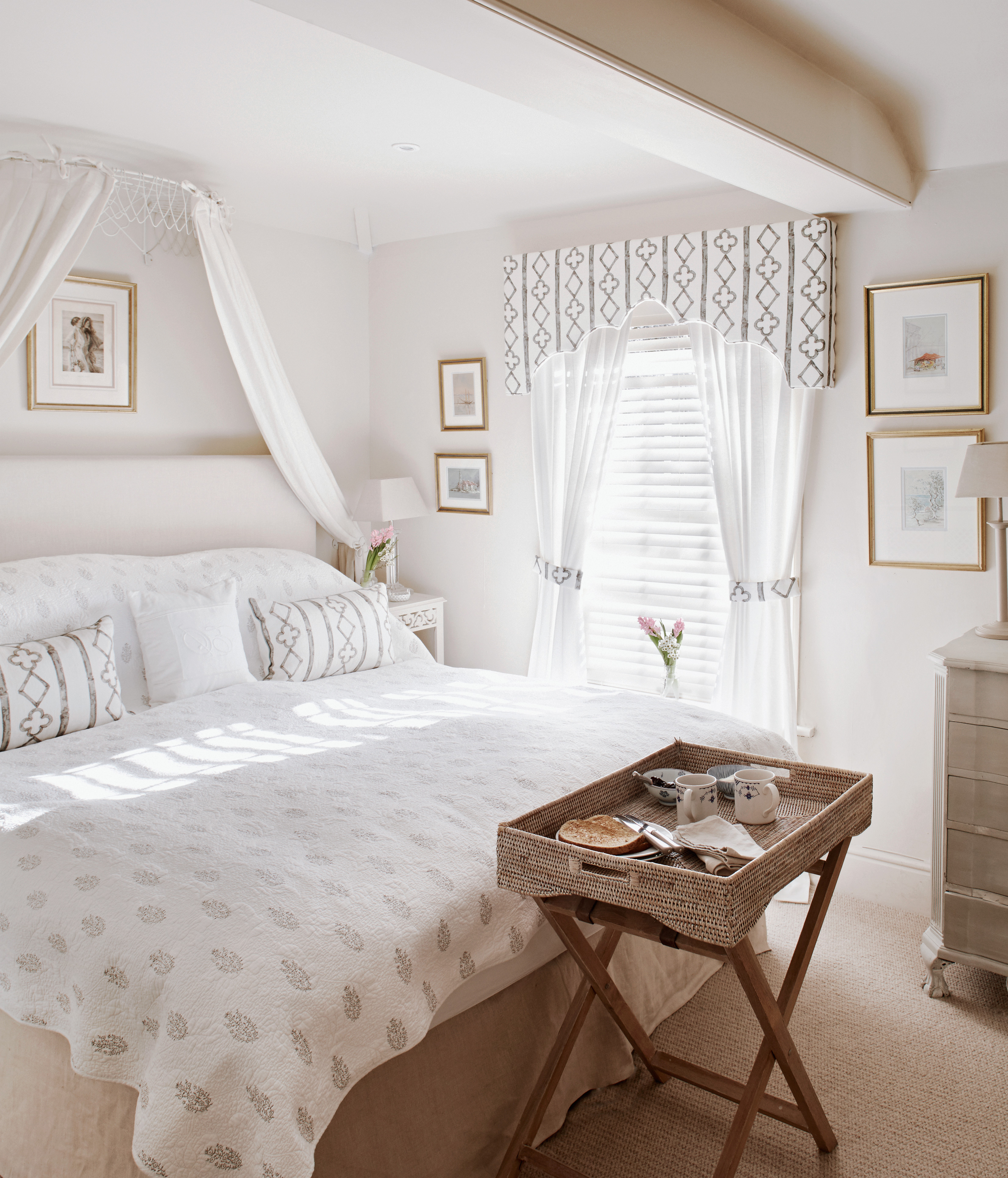Valances vs pelmets vs swags vs cornices: the differences, benefits and drawbacks
Dress your windows beautifully. This is what you should know about valances vs pelmets vs swags vs cornices


Are you weighing up the merits of valances vs pelmets vs swags vs cornices – or want to know the differences between each?
These additional window treatment ideas are designed to complement your drapes, curtains or shade to achieve a more layered look and, of course, bring an added injection of color and pattern. However, they don't have to be fitted with drapes – they are also super useful on their own for softening a window that doesn’t require another covering.
Our guide has the details on valances vs pelmets vs swags vs cornices to guide you in your choice.
Valances vs pelmets vs swags vs cornices: a guide
Valances, pelmets, swags and cornices all suit different decorating styles, from relaxed and pretty to formal and elegant, or opulent.
‘Valances, pelmets and cornices are decidedly more formal options, and are usually paired with a long drape underneath,’ says Maggie Griffin, founder and principal designer of Maggie Griffin Design. ‘They are great for elevating the ceiling height and for hiding unattractive motorized shades.’
Swags tend to create a more informal feel, but your choice of fabric can still create a smart finish. All these elements are also super useful for concealing hardware in curtain ideas and blind ideas.
Which to select? These are the pros and cons of valances vs pelmets vs swags vs cornices.
Design expertise in your inbox – from inspiring decorating ideas and beautiful celebrity homes to practical gardening advice and shopping round-ups.
Valances

A valance is made from fabric and is hung across the top of a window, softening horizontal lines in this part of the room. It might be fitted via a rod and rings, grommet top or tab top.
Where to use valances
Large windows that you want to give a sense of grandeur to; traditional homes.
Where not to use valances
Small, dark rooms that you are trying to brighten.
Pros of valances
A simple ruffled valance adds prettiness with its soft gathers of fabric; while those with pleats have a more formal look. A grommet top is a clean-lined take on the window treatment.
The style of a valance is also determined by other choices. Since you can pick from different heights, valances can be sized to the window’s proportions. You might choose to vary the shape, too, with a scalloped or tie-up design, or add a trim for extra detail.
A valance could be used alone to dress a window that is otherwise left uncovered, making it more eye-catching. Often, though, it is teamed with curtains or drapes and made in matching fabric to the curtains or perhaps in a color picked from a patterned curtain. Alternatively, you might opt for a patterned valance to hang with solid color curtains.
If you want to make a window look bigger, you can hang a valance so that its bottom edge sits just below the top of the window frame; you can also extend its width beyond the width of the window so that the curtains/drapes can pull right back from the window frame.
Cons of valances
Valances are visually quite heavy, so they are best restricted to larger, taller windows; otherwise, your room will feel darker and more enclosed as a result. Because of the pleats, the will gather dust, too, so bear in mind that they will have to be part of your curtain cleaning routine.
Swags

Swags are made from soft pleats of fabric, which hang from the top of the window, draping to a low point in the center. For larger windows, a series of swags, each of which drapes to a low point, might be hung across the window’s width.
The swag(s) is often combined with jabots, pleated fabric that hangs to either side of the window, and both elements can be hung from a rod set, or board mounted.
Where to use swags
Swags are a more lavish window treatment, and one with classic and formal style, which might be used in a dining room or space for entertaining guests.
Where not to use swags
Formal rooms or those where too little daylight is an issue.
Pros of swags
Easy to install, swags can be used alone to turn a window into a beautiful focal point if there are no light control or privacy needs. However, they can be combined with curtains or shades for the most opulent of window treatments.
Cons of swags
If you are not hanging curtains, swags are a good alternative, however, they are designed to hang across the glazing, so will steal light from your room. Fixed swags are a better option than draped ones, since the latter will need constantly rearranging.
Cornices

A cornice is, like a valance, positioned at the top of the window. However, rather than consisting of a drapery panel that adds softness, it has a box-style frame that might be fabric covered, or could be painted.
Where to use cornices
In a room with a window that's proportionally too small or too low: a cornice can give it greater presence.
Where not to use cornices
We think cornices work in most spaces – small and large, contemporary or traditional.
Pros of cornices
A cornice will bring a more structured look, and can create contrast with a shade, curtains or drapes, or match them. It will also conceal window hardware.
It’s an excellent choice to help frame a window, and worth considering if the room itself lacks architectural detail. The final effect, though, is more tailored than you would achieve with a valance.
Cons of cornices
The fabric finish is fixed so can't be laundered; it will, however, gather dust so will need to be vacuumed carefully with the upholstery attachment.
What is a pelmet?

How does a pelmet differ from a valance, swag or cornice? In fact both fabric valances and cornices might be called pelmets so it’s another name for a feature that conceals curtain fixtures and adds decorative detail to the window treatment.
‘A pelmet is the British term for a fabric-covered wooden frame or soft fabric border that sits above a window,’ explains Kelly Simpson, senior director of design and innovation at Budget Blinds, experts in blinds, shades, shutters, and drapes. ‘A soft fabric pelmet can also be called a valance, and a hard pelmet can also be called a cornice.’
What is the difference between a cornice and a valance?
A cornice is a box-style design for the top of the window, while a valance is a fabric design. Although they’ll both add detail and hide curtain hardware, they’ll have a different aesthetic.
‘Cornices are a clean and modern way to add elegance to a room,’ explains Kelly Simpson, senior director of design and innovation at Budget Blinds. Note, however, that they are the more costly of the two options and hanging them is more difficult. Valances, meanwhile, have a softer look. ‘Valances can add a touch of charm to any room and are relatively inexpensive,’ says Kelly.
Are valances in style?
Valances are back in style – a returning trend. ‘Valances were a popular treatment in the 1970s and 1980s and fell out of style in the 1990s when minimalism took over,’ says Kelly Simpson, senior director of design & innovation at Budget Blinds.
‘Today, valances are making a comeback with the shift towards maximalism and the grand-millennial movement. However, they will make your space appear dated if you don’t get window valance ideas right.’

Sarah is a freelance journalist and editor. Previously executive editor of Ideal Home, she’s specialized in interiors, property and gardens for over 20 years, and covers interior design, house design, gardens, and cleaning and organizing a home for Homes & Gardens. She’s written for websites, including Houzz, Channel 4’s flagship website, 4Homes, and Future’s T3; national newspapers, including The Guardian; and magazines including Future’s Country Homes & Interiors, Homebuilding & Renovating, Period Living, and Style at Home, as well as House Beautiful, Good Homes, Grand Designs, Homes & Antiques, LandLove and The English Home among others. It’s no big surprise that she likes to put what she writes about into practice, and is a serial house renovator.